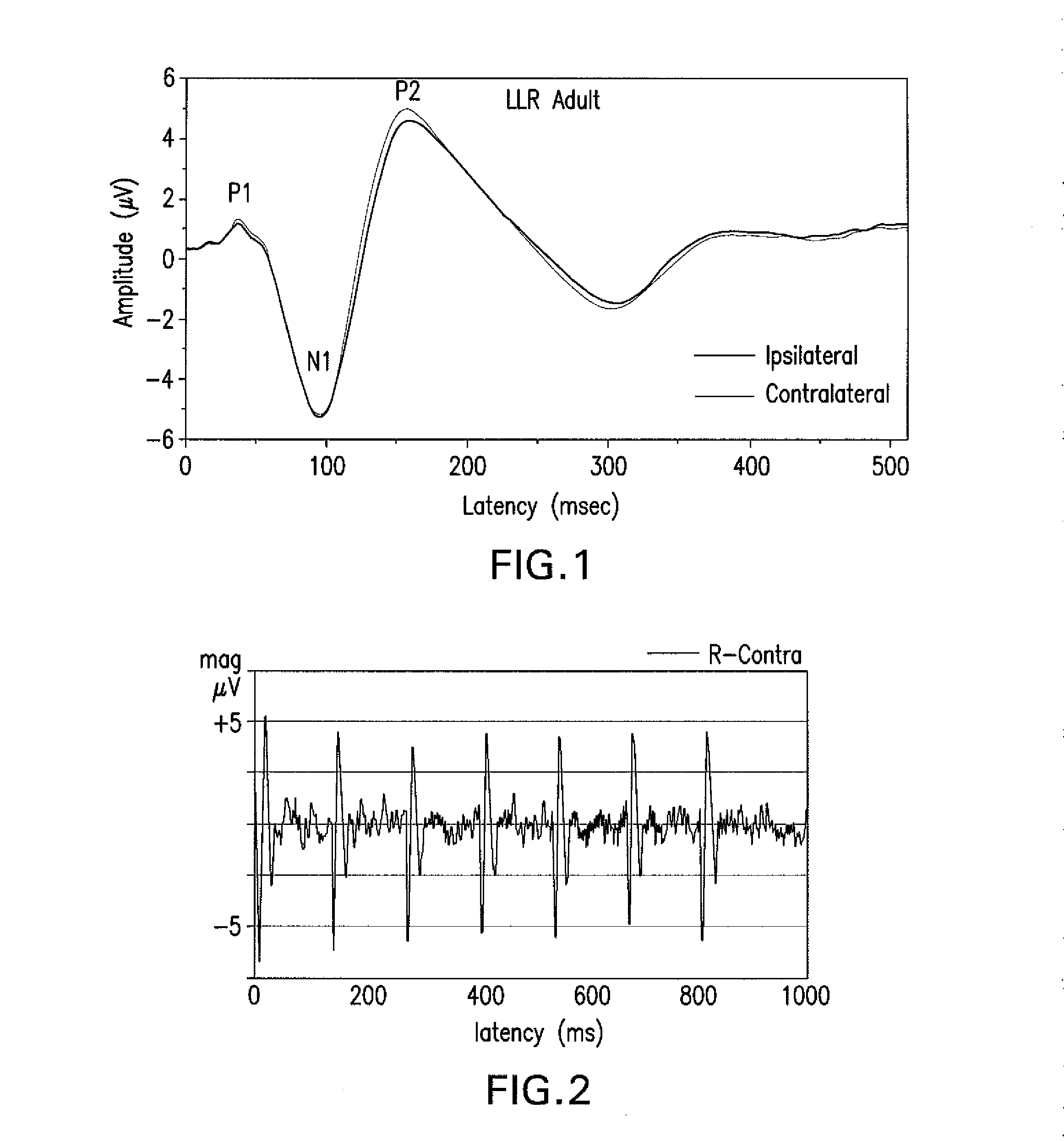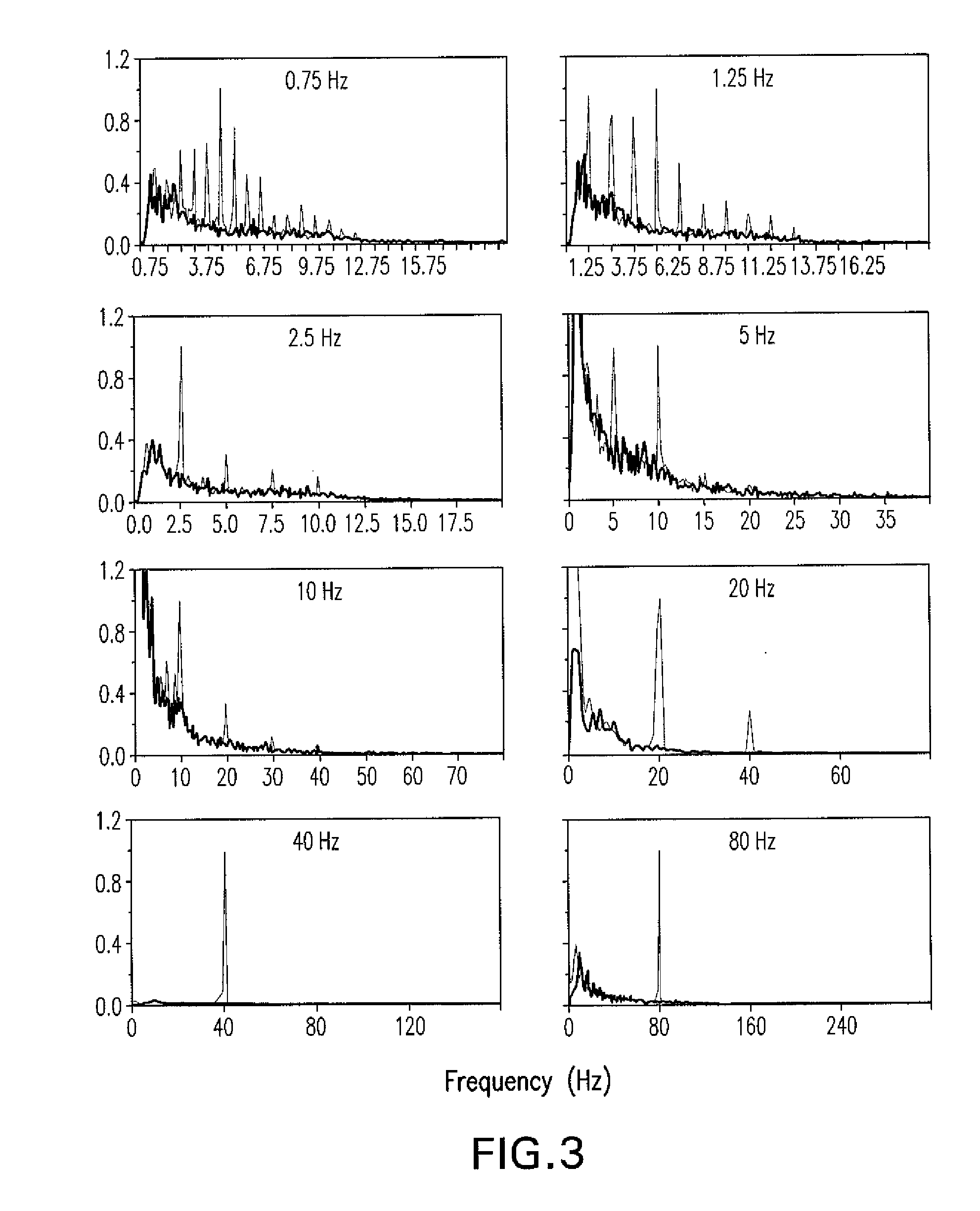Steady state measurement and analysis approach to profiling auditory evoked potentials from short-latency to long latency
a technology of evoked potentials and measurement methods, applied in bioelectric signal measurement, medical science, diagnostics, etc., can solve problems such as the inability to predict the evoked response of transient evoked potentials, the difficulty of identifying some, if not all, of the component waves, and the potential ambiguities of wave identification
- Summary
- Abstract
- Description
- Claims
- Application Information
AI Technical Summary
Benefits of technology
Problems solved by technology
Method used
Image
Examples
Embodiment Construction
[0025]Reference will now be made in detail to the exemplary embodiments of the present invention, which are illustrated in the accompanying drawings. The system and corresponding method of the present invention will be described in conjunction with the detailed description of the system.
[0026]The methods and systems presented herein may be used for profiling auditory evoked potentials in brain electrical activity which apply steady state response concepts to analysis of longer latency responses reflective of activity of brain regions beyond the brainstem, up to an including the cortex.
[0027]Conventional auditory evoked potential techniques employ transient stimuli which evoke a multi-phasic transient response that does not reflect or relate directly to the stimulus spectrum. An example of an auditory evoked potential obtained via the traditional approach is illustrated in FIG. 1 in which a brief 1 kHz sinusoidal pulse was administered at less than 1 / s at 70 db SPL, which is a modera...
PUM
 Login to View More
Login to View More Abstract
Description
Claims
Application Information
 Login to View More
Login to View More - R&D
- Intellectual Property
- Life Sciences
- Materials
- Tech Scout
- Unparalleled Data Quality
- Higher Quality Content
- 60% Fewer Hallucinations
Browse by: Latest US Patents, China's latest patents, Technical Efficacy Thesaurus, Application Domain, Technology Topic, Popular Technical Reports.
© 2025 PatSnap. All rights reserved.Legal|Privacy policy|Modern Slavery Act Transparency Statement|Sitemap|About US| Contact US: help@patsnap.com



